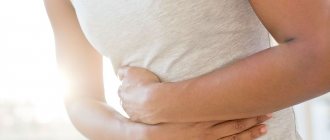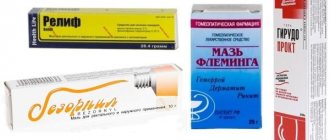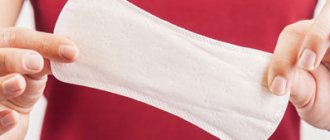Why do acne appear on the face before menstruation?
The appearance of a rash before menstruation is directly related to the biological cycle that occurs in a woman’s body. And during this cycle, various kinds of hormonal changes occur. It is for this reason that such changes can occur before menstruation, and end after the end of the critical days.
Menstrual cycle
The reason for all this is that the menstrual cycle includes several main phases. With the onset of each new phase, the hormonal background in the body changes.
Phases of the menstrual cycle
Table. Development of the menstrual cycle
| Phase | Description |
| Phase 1. Follicular | At this stage, estrogens are actively produced, which is why, accordingly, the production of fats is inhibited, and the synthesis of hyaluronic acid, on the contrary, increases. As a result of all this, the skin looks more hydrated. In addition, under the influence of estrogens, the protective properties of the dermis are enhanced. |
| Phase 2. Ovulatory | The next phase of the cycle is accompanied by a decrease in estrogen levels and an increase in the production of another hormone - progesterone, which has a great influence on the functioning of the sebaceous glands. Progesterone enhances their work, which, in conditions of reduced immunity, leads to skin inflammation, manifested in the form of acne. |
| Phase 3. Luteal | It proceeds relatively calmly, there are no obvious dermatological changes. |
| Phase 4. Desquamation | Here, as during the luteal phase, no changes are observed. |
In addition, the described problem may arise due to the high synthesis of androgens, which promotes the expansion of the sebaceous glands around the 18th or 19th day of the cycle, and the growth of propionic bacteria living on the skin.
Acne (acne) caused by propionibacteria
When determining the causes of acne before menstruation, you need to understand that this is an anatomical feature of the female body. There are a number of additional factors that contribute to the appearance of acne:
- adolescence;
- taking hormonal medications;
- exposure to stress;
- pathologies from the gastrointestinal tract;
- unfavorable climatic conditions;
- use of low quality cosmetics;
- squeezing out blackheads.
The occurrence of a large number of acne can be caused by various factors. They are present every day, but acne appears just before menstruation.
You can get rid of acne before your period using the following recommendations:
- Adjusting your diet during menstruation. It is necessary to exclude fried, salty, spicy, sweet, smoked and flour products from the menu. It is better to give preference to greens, fruits and vegetables. Metabolic processes can be activated with the help of fermented milk products.
- Strengthening the immune system. You can restore the body's protective functions with the help of vitamin complexes, sports, regular walking and outdoor activities. Thanks to these simple actions, your health will improve and the risk of developing a rash will decrease.
- Careful skin care. You need to pay special attention to choosing a cleanser, taking into account your skin type. With its help, it will be possible to remove excess fat from the epithelium, cleanse the pores and prevent the appearance of a rash. Anti-acne masks are useful and should be done regularly to achieve the desired result.
If you follow these simple rules, you will not only be able to eliminate skin defects, but also strengthen your body. Thanks to this, acne will no longer appear before your period.
First of all, here we need to take into account the biological change in the cycle that leads to the appearance of acne on the skin. Before menstruation, women experience various hormonal changes, this is associated with the appearance of pimples and inflamed acne. As soon as the time of critical days ends, acne goes away.
The menstrual cycle consists of four phases, during which there is a high fluctuation in the concentration of hormones in the blood:
- The follicular phase is characterized by strong estrogen synthesis. At this time, the hormone has a beneficial effect on the skin. For acne inflammation, doctors prescribe medications containing this hormone, which suppresses the sebaceous glands and adds moisture to the skin.
- Ovulatory phase. At this time, the concentration of estrogen decreases and the production of progesterone increases, which causes inflammation in the form of acne.
- Luteal and desquamation are phases that occur without interruption of hormones.
The period of occurrence of inflammation in the form of a rash on the skin is individual for each woman. Some may struggle with this problem for two weeks before the onset of menstruation, others notice minor rashes only 2-3 days. In any case, you need to contact doctors who will conduct examinations and prescribe the necessary medications.
But if you have not previously followed any preventive measures, and yet are faced with the appearance of bacteria and acne on the skin of your face before your period, now the time comes when you need to get rid of them, following useful recommendations aimed at solving the problem that has arisen. This may include:
- You can always carry out such a simple manipulation as spot cauterization of acne with iodine, as the most effective option.
- Using tar soap.
- The use of boric acid, calendula tincture, propolis.
- Use Rescuer ointment.
- Wipe your face with tea tree oil.
If you begin to notice that acne looks aggressive during menstruation and a rash appears, then you will need to apply synthomycin ointment to it, combining it with salicylic ointment.
You can’t squeeze pimples, because you can introduce bacteria, and instead of one tiny inflammation you get many problems. When the pimple goes away, you may find an ugly scar in its place; moreover, there is a risk that the root of the pimple will remain inside.
Reasons why acne appears in PMS
- New growths on the skin do not appear immediately, but as a result of the body’s restructuring in a new way. During menstruation, hormonal levels change greatly; disruptions can begin 2 weeks before the expected date of the menstrual cycle.
- The general scheme can be described in several stages. First, the production of female hormones estrogen increases. Hence the glands do not work as intensively as before. They become clogged and plugs form in the ducts. Against this background, the skin is covered with pimples.
- The synthesis of hyaluronic acid increases, the skin is overly moisturized and looks oily. It is thanks to estrogens that the face is less susceptible to external irritants, but acne appears from the inside (clogging of pores).
- After some time, the level of female hormones drops sharply, but against this background the amount of progesterone increases. This hormone is responsible for the functioning of the sebaceous glands, provoking even stronger formations.
- Progesterone increases the body's sensitivity to external factors. We are talking about natural allergens (pollen, perfume, etc.), weather conditions (ultraviolet radiation, frost, etc.), stressful situations, polluted conditions. All this has a bad effect on the skin, and the hormone only aggravates an already deplorable situation.
- Androgens are often the culprit in the formation of acne. They are synthesized presumably on days 19-21 of the cycle. At this time, the sebaceous glands multiply and show strong activity.
- In addition to the above reasons, other factors should not be excluded. This number includes a large number of keratinized skin particles, weakened immunity as a result of the disease, psycho-emotional stress, and ailments of the digestive system (in particular the intestines).
- The culprits for the appearance of rashes can be endocrine diseases, high humidity in the room, dust, exposure to ultraviolet radiation, taking strong antibiotics, and using low-quality cosmetics (clogging pores) during PMS.
- When you squeeze out pimples on your own, the tumors appear again, but in a different place. To be sure that the rash is caused by an early period, study the area of dislocation. In this case, pimples will form not only on the face, but also on the neck, chest, shoulders, and back.
acne on the forehead in women - causes and treatment
Treatment of rashes
The most favorable time for the maturation of new inflammations is 10-15 days preceding the onset of menstruation. Therefore, over the next two weeks, acne actively begins to appear on the most vulnerable places of the female body: face, back, shoulders. Before menstruation, the fat content of the epidermis increases and it becomes more moist. And this is an excellent environment for the growth of bacteria. In addition, menstruation itself weakens the body, which also does not go unnoticed.
In order to get rid of acne, which appears exclusively before menstruation, the widely used drugs Zenerita and Skinoren are not effective, since they are aimed at regular control of sebaceous secretions on the face and reducing the number of bacteria that cause inflammation on the skin.
Their use in such simple cases can lead to addiction in the dermis or a reverse response, as a result of which acne will constantly appear on the skin for no reason.
Cream Skinoren Zenerit
Effectively treat prestrual manifestations with available drying medications:
- Salicylic cream;
- Syntomycin ointment;
- Salicylic-zinc paste;
- Zinc ointment;
- Iodine solution;
- Alcohol solution of salicylic acid.
Iodine solution Alcohol solution of salicylic acid Salicylic-zinc paste Salicylic ointment Syntomycin ointment
These medications are carefully applied to an individual rash, pointwise, without touching the healthy surface of the skin.
Medication
In order to eliminate hormonal acne, you can use one of two methods:
- Blood purification by transfusion outside the body. Transfusion of your own blood serum ensures cleansing, and rashes no longer occur before critical days.
- Use of oral contraceptives. Medicines normalize the presence of hormones in the female body, including progesterone.
These methods make it possible to achieve fairly long-term results, however, not everyone dares to undergo autohemodialysis, and oral contraceptives must be used regularly.
In addition, during the period of using contraceptive drugs, side effects may appear - increased sensitivity of the mammary glands, migraines, menstrual cycle disorders, fatigue.
Phytotherapy
Most plants contain a sufficient amount of substances useful for the skin and the entire female body - phytohormones, digestives, vitamins.
Especially beneficial for the skin:
- Plant female hormones (estrogens) and flavonoids are substances that provide the cells of the entire flora with red, orange, purple, indigo or yellow color. They have active antioxidant characteristics and enable women not to lose their youth and attractiveness.
- Tinctures and decoctions from plants provide a positive effect on the entire female body.
- Legumes and grain plants, citrus fruits, and most medicinal plants contain a significant amount of estrogens. They are able to be perfectly absorbed by the female body when drinking or using another method, help get rid of acne and optimize the condition of the skin when used externally.
We suggest you read How to get rid of acne on your chest
Traditional methods
The most “popular” folk methods of combating acne and redness are:
- targeted application of alcohol-containing solutions to inflamed areas,
- spot application of salicylic or syntomycin cream, cindol, to acne (eliminates the inflammatory process, provides an antibactericidal effect, and a drying effect);
- cauterization of acne with iodine solution (stops the transition of the inflammatory process to healthy areas of the skin).
Almost always getting rid of the recurring occurrence of rashes and predetermining relapses is possible by changing the products consumed to a healthy diet and skin care with high-quality products.
However, some girls still experience acne. In some cases, they develop rashes after their period.
It is possible to completely get rid of completely unaesthetic acne through autohemotherapy and the use of oral contraceptives:
- Autohemotherapy involves transfusion of your own serum. During this event, the patient’s blood is purified, which ensures complete relief from such manifestations on the skin before and during menstruation.
- The use of contraceptives helps improve the functions of female hormones. In particular, they have an excellent effect on the activity of progesterone. Both methods provide long-term results. However, each of them has its own disadvantages. The use of contraceptives implies consistency and consistency.
Dependence of rashes on the face on the menstrual cycle
The girl’s body is forced to depend throughout her life on cycles governed by hormones. Each cycle is divided into separate stages, during which the effect of some hormones increases and the influence of others decreases.
The male body does not “storm” like this for a month. This explains the fact that women are more emotional, while men are stable and balanced.
A stable cycle between menstruation lasts 28 days. Ovulation occurs exactly in the middle, and on the 18th-20th day the peak production of the male hormone progesterone occurs. This is due to its main task during this period - preparing the uterine mucosa to receive a fertilized egg.
If the egg is implanted, then pregnancy occurs. When this does not happen, the menstrual cycle continues, ending with menstruation. Progesterone levels drop until the next time the body needs its help again.
But hormones are tricky. While helping in one place, they can harm in another. Carrying out its direct duties, progesterone plays pranks in the periphery - it increases the rate of sebum production in the upper layers of the epidermis. This causes the formation of pimples in the same place according to the scheme described above.
Having understood the process, it becomes clear why rashes on the face, back, chest and other parts of the body appear cyclically. During the greatest activity of progesterone, acne and other rashes appear, and with the onset of menstruation, when the level of this hubbub drops, they gradually disappear.
How quickly they heal and whether they leave behind marks in the form of spots or scars depends on:
- quality of the epidermis;
- procedures performed (or not performed) for the purpose of treatment.
In cyclical rashes, which have an obvious dependence on the phase of the menstrual cycle, progesterone is to blame. This is a male hormone, the production of which is normally increased by a healthy female body 7 days before the start of the expected period and decreases with its onset.
What happens to the body during blood loss?
For women, each phase of the monthly cycle has its own characteristics. This is due to hormonal changes.
So, a week and a half before the start of menstruation, the process of active production of progesterone begins, stimulating increased sebum secretion. An increase in male sex hormones – androgens – also contributes to the abundant production of sebum. At this moment, the emotional state becomes unprotected, which leads to increased nervousness and fatigue.
This hormonal background also negatively affects the skin. The pores become clogged and lose the ability to resist inflammatory processes. The most vulnerable areas are the forehead and chin, where the number of sebaceous glands is greatest. This is where pimples appear first. It is better to take care of your skin on such days with lotions that do not contain alcohol.
In the first week of menstruation, skin oiliness becomes even higher. This makes it vulnerable to all sorts of allergic reactions and bacterial growth. The rash may get worse. On such days, it is better not to injure the epidermis: do not squeeze out pimples, do not steam the skin and do not use scrubs.
Manifestations of an allergic nature
Allergy is an increased sensitivity to any substance, artificially synthesized or biologically active substance of one’s own body. It manifests itself in the form of skin rashes of various types, swelling, peeling, dryness in certain areas of the skin, as well as anaphylactic shock and Quincke's edema. The last two conditions can take a person’s life if qualified assistance is not provided within 5 to 10 minutes.
In addition to the usual allergic reactions, menstrual dermatosis occurs in women. In foreign sources it is usually called antiprogesterone dermatitis (APD). This is a kind of “allergy to menstruation” and the hormonal background that is formed in the female body in the second phase of the cycle.
The main manifestations of menstrual dermatosis include the following:
- Rashes of various types on the skin. This may include interdigital peeling or redness of the cheeks on the eve of menstruation, as well as widespread hives throughout the body. These spots may have a raised edge and a darker center, often looking like hives.
- Blisters may appear on affected areas of the skin.
- The rash can be erysipelas in nature, and also look like a hemorrhagic (with bleeding) rash.
- Itching occurs rarely and is not intense.
- All such changes occur clearly on the eve of menstruation, as well as in its first days. Sometimes women notice such signs on the expected days of ovulation.
Separately, we should consider the increased sensitivity of some women to intimate hygiene products, especially to pads and tampons.
In such situations, the clinical picture is as follows. As you use the product, a condition arises when it is no longer possible to use it due to a large number of unpleasant sensations. For example, there is itching and discomfort in the vagina (more often with tampons). Along with this, a feeling of dryness and a foreign body may appear.
In the case of pads, swelling, redness, and itching appear in the area of skin contact with its surface. More often this concerns the labia majora, perineum, and buttocks. Manifestations of this pathology are noticeable only during menstruation, since only on these days it is necessary to use additional means. Such an allergy after menstruation gradually regresses and reappears after 28-30 days as pads or tampons are used.
Development of allergies
How to prevent acne before menstruation?
Prevention of rashes
Everyone should clearly understand that any inflammation or acne on the skin is much easier to prevent than to cure, which means that by following certain preventive measures, you can always achieve the desired result:
- You need to start by changing your diet, preferably getting rid of spicy, sweet, salty foods, and baked goods. It is necessary to add fermented milk products to the menu - they can optimize metabolism, and this leads to the fact that fat fiber does not stagnate and does not cause acne.
- Don't forget about regular exercise. Every day you need to do exercises, actively play sports, eat fresh fruits and vegetables. As soon as a cold period sets in, take a complex of vitamins. This will avoid the formation of acne on the skin before menstruation, but also improve the condition in general.
- Cosmetics must be selected wisely. As a rule, clay masks will allow you to deeply cleanse the skin, which you should pay attention to. Remember, as for cleansing procedures, it is advisable to perform them regularly - once a week. Wash your face with plain water 2 times a day.
- If you have a skin type that is prone to acne, then before your period, you can use the drug salicylic acid. The acid is famous for effectively cleansing the skin by eliminating harmful bacteria. It is advisable to cover up pimples that appear on the skin with iodine.
- Try to avoid stressful situations, they begin to undermine your health and lead to acne.
Dietary recommendations to prevent acne before your period
Many girls do not want to deny themselves the consumption of unhealthy foods, which are sometimes associated with the appearance of acne on the skin.
You need to follow useful tips, diversify your diet with fruits and vegetables every day.
- You need to give up spicy, salty and fatty foods. This does not mean that you need to give up meat altogether, but do not fry it, but bake it, and in general it is useful to eat boiled meat, which is something you need to know.
- It is worth considering that chocolate is considered harmful, so if you have a sweet tooth, then at least limit its consumption for a while, because this is done for your own good. It is best to replace chocolate with dates and other dried fruits, which are really healthy.
- Do not forget that you can diversify your diet; to do this, use high-quality fermented milk products, which allow you to optimize your metabolism. Starting to use them, you can notice how your skin becomes not only beautiful, but also clean, without any rashes.
Prevention
Rashes in women on “critical” days are associated with the functioning of the body. But such troubles can be caused by other factors. These include:
- Diseases of internal organs and endocrine system
- Stressful situations
- Unfavorable climate
- Low quality cosmetics
- Manipulation of skin with violations of hygiene requirements
- Weakened immunity
- Poor water quality
- Taking hormone-containing drugs
- Puberty
- Pregnancy
- Abundance of fatty and floury foods in the diet
An unpleasant rash on the face appears with diseases of the internal organs. Localization of acne on the forehead indicates intestinal or gallbladder disorders. Pimples on the cheekbones and in the area close to the eyes indicate kidney problems. Rashes on the nose are a sign of cardiovascular disorders. Respiratory disorders make themselves felt by a rash on the cheeks, and of the genitourinary system - on the chin. The latter may also indicate problems with reproductive activity.
Despite the tendency of the female body to break out during hormonal fluctuations, acne can still be prevented. A few simple recommendations will help you be fully prepared.
- Nutrition adjustments. It involves giving up sweets and confectionery products, as well as spicy seasonings and smoked foods. Fermented milk products, which normalize sebum levels, will be good metabolic aides. And drinking a large amount of clean water during the day will help remove toxins from the body that negatively affect the epidermis.
- Work on improving immunity. You will need very little: lead an active lifestyle, breathe fresh air, play sports, eat a lot of fresh herbs and garden products.
- Maintain skin hygiene using properly selected cosmetics. To avoid contamination of the epidermis and the appearance of rashes, the face should be cleansed twice a day: in the morning, after waking up, and in the evening, removing makeup before going to bed. Skin care products must be selected according to its type. Do deep cleansing once a week using peels, masks or clay.
Following these simple rules will relieve the monthly torment associated with acne and increase self-confidence.
If there are no visible results when following preventive measures, it is best to seek medical help from a doctor. A competent specialist will help identify the cause of the rash and eliminate it.
Despite the fact that acne before menstruation is a natural process, its occurrence can be prevented by following simple recommendations from doctors:
- Proper care and skin care measures significantly prevent severe rashes.
- Correction of diet. It is necessary to completely remove from the diet or significantly reduce the intake of salted, smoked, peppered, bakery and confectionery products. In everyday food, it is imperative to include fermented milk products, which ensure active metabolism, and in addition parsley, dill, lettuce, vegetables, berries and fruits.
- Strengthening the body's defenses. Taking vitamins in combination, physical exercise, and walking in the fresh air undoubtedly help maintain immunity, optimize overall health and well-being, which in itself is an advantage in the fight against acne and other subcutaneous rashes.
Location of rashes
Let us immediately make a reservation that this theory has not been confirmed by any research, however, the observations of dermatologists suggest that most often the location of the accumulation of pimples indicates certain problems in your body. If your pimples are most often concentrated on your forehead, then this indicates improper functioning of the intestines and gallbladder.
If inflammation is located on the cheekbones and near the eyes, this may indicate problems with the kidneys and adrenal glands. Inflammation on the nose is a signal from your cardiovascular system. If it mainly covers your cheeks, then you should check your respiratory system, and pimples on the chin indicate problems in the reproductive system.
Severe inflammation in the area of the lymph nodes and on the neck is a hormonal imbalance. It has become a little clearer why pimples before menstruation always appear in the same area, but let’s now think about what to do about this scourge.
On the face
The place where various tumors pop up can tell about some health problems.
On the face, acne before menstruation most often appears in the following areas:
- On the chin. Problems relate to the reproductive system.
- On the cheeks. Diseases begin to form in the respiratory organs.
- On the cheekbones or area around the eyes. A woman's kidneys are not working properly or her adrenal glands are dysfunctional.
- On the nose. Soon difficulties will be observed in the functioning of the cardiovascular system.
- On the forehead. The disease progresses in the intestines or gallbladder.
If a rash appears in the same place every month, it means there is a problem in the body. To prevent it in a timely manner and prevent the development of the disease, it is recommended to consult a doctor. He will conduct an examination and prescribe treatment if necessary.
On the chest and back
Typically the rash is localized to these parts of the body as a result of excessive sweating. This is especially common among women in the summer, when they choose clothes that do not allow air to pass through. If acne breaks out on the chest and back every month, this indicates a malfunction of the sebaceous glands and dysfunction of the hair follicles.
More radical measures
Those methods that were mentioned, as a rule, always help in reality. But if you want to evaluate the effect, you should be patient and time, since this will not happen during the next cycle, but only after one cycle. All this is easy to explain, because the body requires time to adapt to radical changes, and this should be taken into account.
We suggest you familiarize yourself with Acne on the face in men: why it occurs and treatment methods
https://youtu.be/xjdjpBeyKwU
But often women do not want to expect this, thereby deciding to take radical measures, the use of drugs - oral contraceptives. Such drugs interfere with pregnancy, but also affect the functioning of hormones and cause acne on the skin.
The methods listed above almost always help. But the effect will not be noticeable during the next cycle, but only after one, since the body needs time to adapt to the changes. Sometimes women do not want to wait that long, so they agree to more radical measures.
Oral contraceptives. Such drugs prevent pregnancy, but at the same time affect the functioning of hormones (including progesterone).
Oral contraceptives
What is not recommended?
Avoid squeezing pimples as you risk causing and spreading the infection. In general, you should touch your face as little as possible with your hands. Clay masks can be used before menstruation, but if menstruation has already begun, then you should forget about them for a while.
Experts advise washing with tar soap, which cleanses the skin well, but do this no more than once a day so as not to dry out the dermis. This is especially important if your skin is problematic in itself.
The same applies to alcohol - it also dries out the skin, so try to use products that do not contain it. If your period has already begun, try to use cosmetics to a minimum.
Before menstruation, women often crave sweets and other harmful foods. But if you start eating chocolates, you may get even more breakouts. Try to find more worthy alternatives to them: fruits or dried fruits, for example.
Eliminating the problem with medication
A specialist will tell you how to deal with skin problems during menstruation. First of all, this is a dermatologist, as well as an endocrinologist or gynecologist. If defects on your face plague you on a monthly basis, you may be prescribed a laboratory hormonal test, based on the results of which a further treatment plan will be developed.
An integrated approach is usually taken to eliminate this problem. How many days the effect will become obvious depends on the individual characteristics of the body. Priority actions may include:
- Vitamin preparations - they are indispensable when there is a lack of nutrients in the body.
- A mild sedative will help you overcome stress, because, as you know, many diseases arise precisely against this background, and acne is also included in this list.
- Probiotics – needed to improve digestion. With their help, metabolism is also normalized and pathogenic microflora is eliminated.
- Antimicrobial drugs are prescribed if any infections or inflammations are detected.
- Oral contraceptives help restore hormonal balance in a matter of months. Their only disadvantage is that the effect lasts only while taking the drugs and may disappear after they are discontinued.
- Blood or plasma transfusions are a radical method of getting rid of acne, aimed at cleansing the blood. The effect is persistent and long-lasting, appearing a month after the procedure.
- A recommendation to get pregnant is a serious step that can radically change the hormonal background of the female body and change its entire functioning.
- Local use of medications - with their help you can stop the development of subcutaneous inflammation. Regular iodine, tea tree oil and salicylic ointment, which must be applied pointwise, will be good helpers here. Calendula tincture and boric acid can dry out acne. A good effect for oily skin can also be achieved by washing with tar soap.
Causes, treatment
Acne appears in women due to increased male hormones. However, there may also be contributing factors. These are adolescence, stress, gastrointestinal diseases, taking hormonal drugs, poor-quality cosmetics, ecology, squeezing out pimples. The problem may arise due to reduced immunity.
If these factors are not present, but acne still appears, then the problem is in the individual hormonal background. If you have not encountered such a problem before, then you should listen to your body, there may be some violations.
Tea tree oil, iodine, salicylic ointment, tar soap, zinerite, and cosmetic clay masks help in the fight against acne. Don't squeeze pimples. This will contribute to the spread of infection. Pay attention to your diet, hygiene, lifestyle. Quit bad habits. Read more about the problem and how to combat it below.
Nature itself will help you fight skin problems
Many representatives of the fairer sex do not at all encounter such a problem as the appearance of pimples on the skin before menstruation. The reason is related to proper skin care and proper nutrition.
Try to follow preventive measures that will help get rid of hormonal changes, inflammation and acne on the skin before menstruation. It will be necessary to take measures to strengthen the immune system - a radical revision of the diet (balanced diet, eating healthy foods), avoiding stressful situations, taking medications prescribed by the doctor.
To strengthen your immune system, you need to adhere to the rules of a healthy lifestyle - harden yourself, drink vitamins, herbal remedies that are suitable for solving the problem of acne on the skin.
If the above recommendations do not help, then you should seek help from an endocrinologist, a specialist will answer your questions, prescribe medications, then you can find out the reason why, during your “critical days,” you encounter acne and an inflamed rash on the skin.
After the examination, the doctor will prescribe a treatment that is suitable for you, and then you can realize your plans, enjoying clean and smooth skin.
Maximum benefits for the epidermis and the whole body can be obtained from herbal remedies. Particularly valuable are plants whose fruits are colored yellow-red, as well as blue and purple.
Eating citrus fruits, cereals and legumes will help change your skin condition for the better and overcome rashes. A positive result is achieved by using masks containing lemon juice and sea buckthorn pulp, as well as lotions with green tea. Pineapple pulp and parsley decoctions heal skin wounds well and even out the complexion.
Folk remedies will help you overcome skin rashes associated with PMS. We got them from our grandmothers, who actively used them back in the days when blood transfusions were not even heard of, and contraceptives were not invented.
- Potato mask - helps eliminate oily skin and fight acne. To prepare it, you need to mix 3 tablespoons of raw grated potatoes with half an egg white, seasoning it all with a spoon of oatmeal. You should keep this mask on your face for about half an hour.
- A decoction of St. John's wort has a disinfectant effect on the skin. To prepare it, you need to take a spoonful of herb flowers and bring to a boil in a glass of water. Then boil for another 15 minutes and cool at room temperature. You need to wipe your face with this decoction twice a day. At the same time, store it in a dark place. For oily skin, it is better to infuse a spoonful of St. John's wort in a glass of vodka for a week. Then use it as an anti-acne remedy - apply 10-minute lotions to problem areas using cotton pads or gauze.
- The use of calendula tincture is also effective in the fight against acne. To do this, you need to infuse a teaspoon of the plant’s flowers in one hundred grams of alcohol for a week, then add a glass of warm decoction from the same calendula flowers and 1 tsp to the solution. honey Apply once a week in the form of 20-minute compresses.
Pimples after menstruation: causes of appearance
If the question about the presence of inflammation before menstruation was not difficult to answer, but the formation of acne after the end of the cycle is more difficult to answer. Pimples after menstruation are most often the result of a protracted process of their maturation. The body's protective functions are reduced, so acne has grown from a mild stage to a moderately severe one.
To get rid of inflammation, you need to consult a dermatocosmetologist. Doctors recommend taking medications and vitamins to improve immunity. The drugs “Tinrostim” and “Gumivit” give good results. It is also good to take a course of vitamins A, B, E and C. Vitamins of group A contain retinoids, which effectively fight inflammation. Vitamin E regulates retinol levels. Vitamins of group C – cleanse the skin, destroy impurities.
What to do if acne appears before your period
It’s good if prevention yielded results. But how to deal with acne before menstruation that has already appeared?
First of all, you need to mentally prepare for the fact that one procedure will not save the situation and for some time the woman will have to see unpleasant manifestations on her face.
The second and most important rule to follow is that under no circumstances should you squeeze pimples. It should be remembered that inflamed subcutaneous acne is a source of infection in which inflammatory processes actively occur. By opening a pimple that has not yet come out, a woman risks introducing dirt into it, which will lead to even greater inflammation. And because of this, more and more acne may begin to appear. Such open wounds will take longer to heal and will leave scars.
Aids
To prevent such an outcome, the affected areas must be spot-treated with iodine or any other agent that removes inflammation and dries out the skin.
If a woman has oily skin, tar soap can help her get rid of acne. Treating acne with zinerite ointment, calendula tincture or boric acid also helps well. All these products disinfect the lesion and promote faster healing of acne. Using tea tree leaf oil is also good for acne. It can be applied to spots, all over the face or added to masks.
Methods for emergency measures
Such methods of control and prevention, in most cases, give excellent, but not quick results. Usually, the effect is visible no earlier than after a month. If there is no time to wait or problem skin causes great discomfort, there are more radical methods of struggle:
- Autohemodialysis is a procedure of transfusion of one's own plasma. It helps cleanse the blood and fight rashes on the face before menstruation.
- Hormonal drugs. We have already said that properly selected hormonal contraceptives not only help prevent unwanted pregnancy, but also treat acne that occurs during the menstrual cycle.
- Administration of drugs subcutaneously under areas of inflammation. Treating acne this way is extremely risky, because if an infection occurs during such procedures, re-inflammation cannot be avoided. Doing this procedure yourself is also highly discouraged.
All of the radical options described can give a positive effect over several weeks. However, the decision to use them should be a personal choice for each woman.
Acne after, during and before menstruation is not a punishment, but a physiological feature of the female body. If you are faced with such trouble, you should not give up, especially if the scale of the damage is significant. Yes, such a situation can undermine self-confidence, but modern treatment methods and constant preventive methods, which are described on this site, will help rid you of such manifestations forever.
Treatment methods
Cosmetics with anti-inflammatory and antibacterial properties are suitable for treating acne. Before use, it is advisable to consult a dermatologist. He will determine which products are suitable for your skin condition and type.
In case of problems with hormones, the doctor may prescribe additional drug therapy. In some cases, oral contraceptives are prescribed.
See also: The effect of antidepressants on menstruation
There are salon treatments that help fight rashes. These include:
- masks based on clay, hyaluronic acid, zinc, and other substances;
- massage that helps improve blood circulation and normalize metabolic processes;
- acid-based peels or mechanical scrubbing (using special tools);
- laser cleaning, which helps to narrow pores, disinfect and destroy bacteria that cause inflammation;
- ultrasonic cleaning – helps remove dead cells using sound vibrations;
- cryotherapy – allows you to destroy bacteria accumulations with liquid nitrogen;
- cleansing pores using a vacuum nozzle;
- mesotherapy - helps fight rashes by introducing special substances under the skin.
In addition, there are rules that help speed up the healing process of acne. The first and most important thing is to adhere to a healthy lifestyle. No treatment will help if a person does not sleep enough time and eat right, and also does not give up bad habits.
Skin health depends on the condition of the body. A couple of days before menstruation, you should limit your intake of junk food. Smoked, fatty, fried foods, and sweets increase the functioning of the sebaceous glands on the face.
To improve intestinal function, you simply need to increase your consumption of vegetables and fruits, lean meat and fish, cereals, and dairy products. This will improve the digestion process and rid the body of toxins.
Clean water is also important for healthy skin. You need to drink at least 2 liters per day. Coffee and tea, juices do not count.
In order for inflammation to heal faster, you do not need to use foundation. They can clog pores and cause new acne to appear.
When treating rashes, you need to carefully monitor hygiene. It is better to use paper towels to dry your face. Bacteria accumulate on ordinary towels; a humid environment is an ideal place for their reproduction. In addition, it is necessary to wash and iron your pillowcases as often as possible.
You should also try not to touch your face with your hands during the day, and wipe your phone screen with antibacterial wipes.











